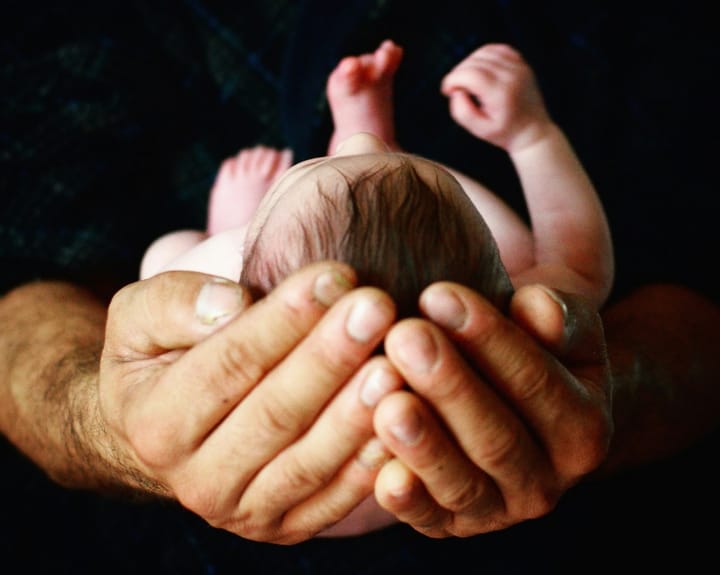Circadian Rhythm: How Sleep changes from baby to infant

How infants sleep changes profoundly as they grow, influenced by distinct neurophysiological processes.
This study revealed how factors like the body’s drive to recover from sleep deprivation and the influence of light on our internal clocks mature in early life.
This field of science is so interesting and will resonate - even with readers who have not yet faced the challenge of long, sleepless nights with a baby who seems impervious to fatigue ...
The study
The study explored the development of sleep in infants by using a model that combines two key mechanisms: the homeostatic sleep process and the circadian rhythm.
The study analyzed data from various sources, including extensive sleep diaries and actigraphy, covering infants from a few days to 18 months old.
Actigraphy is a non-invasive method of monitoring sleep-wake patterns and physical activity using a small, wearable device. The device, typically worn on the wrist, tracks movement patterns to estimate sleep duration, quality, and circadian rhythms. It’s commonly used in sleep studies and insomnia research.
The data showed that right after birth, infants experience a highly fragmented and disorderly sleep pattern. Over time, these patterns become more regular, with consistent sleep-wake cycles and daytime naps that are taken at similar times each day.
The researchers developed a model to better understand this maturation. The model included four parameters that influence sleep regulation: the rate at which sleep pressure builds up, the time it takes for sleep pressure to clear, the strength of circadian control over sleep timing, and the delay in the circadian clock's response to light.
Sleep pressure
Sleep pressure is the natural drive to sleep that builds up the longer you stay awake. It’s driven by a chemical called adenosine, which accumulates in the brain during waking hours, making you feel sleepier as time goes on. Once you sleep, adenosine levels decrease, reducing sleep pressure and helping you wake up refreshed.
The study showed that, in the first few months of life, the rate of sleep pressure buildup is high but gradually decreases with age. The circadian rhythm, initially weak at birth, gradually becomes stronger as the infant’s biological clock matures in response to environmental cues.
It also showed that babies are more sensitive to environmental light, which shapes their internal schedules as they grow.
The study also examined four infants individually, each showing unique sleep development patterns. For example, one infant reached a consistent two-nap sleep pattern by around 120 days, while another did not consolidate sleep into a single nap until after 500 days.
Despite these differences, the infants shared some similarities in their sleep maturation, such as a decrease in sleep pressure and the gradual strengthening of the circadian rhythm.
The researchers observed that parents' routines also play a role. Structured schedules seem to accelerate these (for parents, very desired) changes compared to less regulated environments.
Why babies' sleep patterns are "need to know" not just "nice to know"
Understanding these mechanisms is vital because sleep is fundamental to brain development and overall health in childhood.
The key findings, response to sleep pressure and sensitivity to light change significantly over time, mark milestones in sleep research.
These discoveries highlight how sleep not only adapts to external cues but also reflects an underlying biological that varies among individuals, even very tiny ones.
About the scientific paper:
First author: Lachlan Webb, Australia
Published: PLOS Computational Biology, October 2024
Link to paper: https://journals.plos.org/ploscompbiol/article?id=10.1371/journal.pcbi.1012541




Comments ()